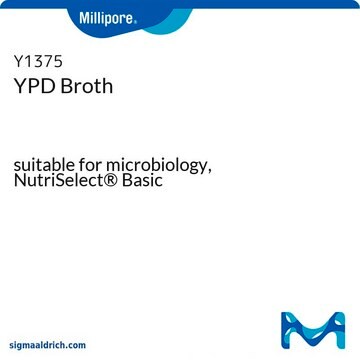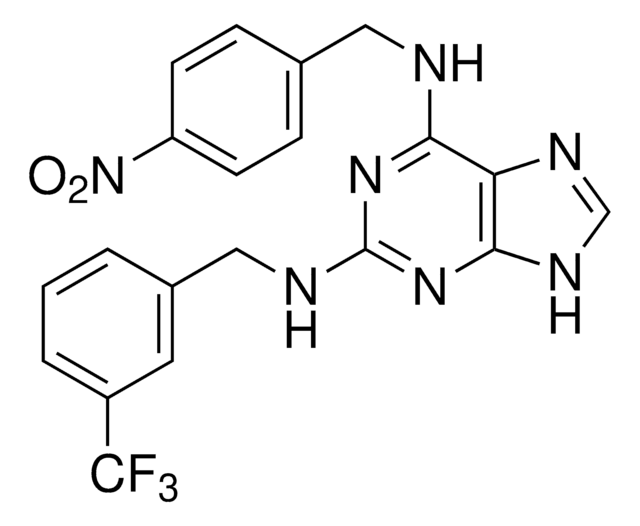Y1500
YPD Agar
Synonym(s):
Yeast Extract Peptone Dextrose Agar, YEPD Agar
About This Item
Recommended Products
form
powder
Quality Level
composition
Agar, 15 g/L
Bacteriological peptone, 20 g/L
Glucose, 20 g/L
Yeast extract, 10 g/L
application(s)
food and beverages
suitability
nonselective for Candida spp.
nonselective for Pichia spp.
nonselective for Saccharomyces spp.
nonselective for Zygosaccharomyces spp.
General description
Application
- to cultivate S. cerevisiae strains to find a long-term preservation method for a deep space biosensor mission
- for yeast strains in in vitro broth microdilution (BMD) based on minimum inhibitory concentration (MIC)
- for Zymoseptori triciti strains for virulence studies
Preparation Note
2. Heat to boiling while stirring to dissolve all ingredients completely.
3. Autoclave for 15 minutes at 121°C.
Storage Class Code
11 - Combustible Solids
WGK
WGK 3
Flash Point(F)
Not applicable
Flash Point(C)
Not applicable
Personal Protective Equipment
Choose from one of the most recent versions:
Certificates of Analysis (COA)
Don't see the Right Version?
If you require a particular version, you can look up a specific certificate by the Lot or Batch number.
Already Own This Product?
Find documentation for the products that you have recently purchased in the Document Library.
Customers Also Viewed
Our team of scientists has experience in all areas of research including Life Science, Material Science, Chemical Synthesis, Chromatography, Analytical and many others.
Contact Technical Service











